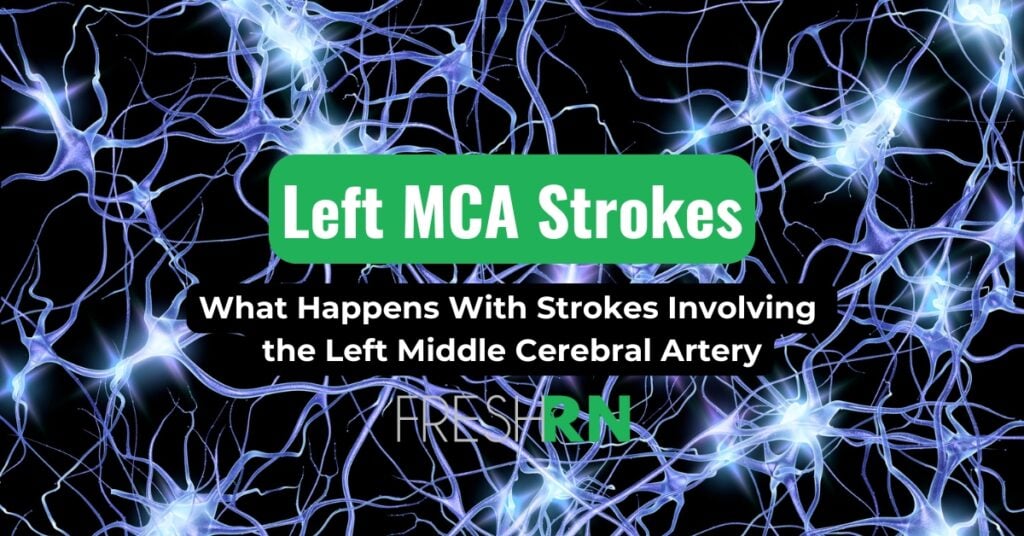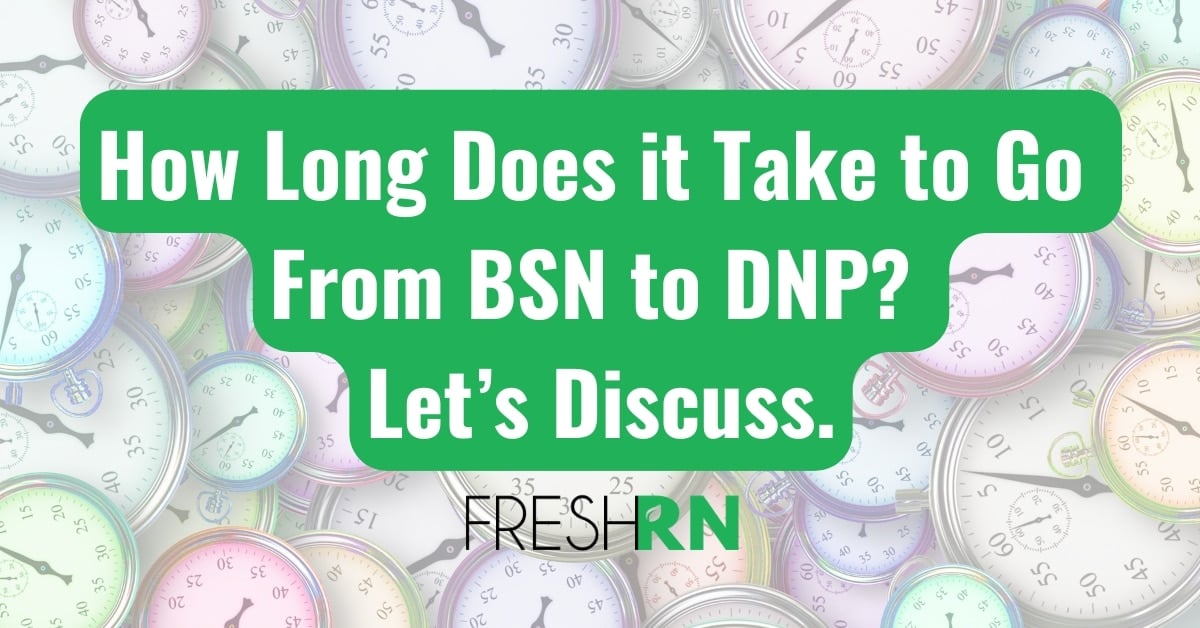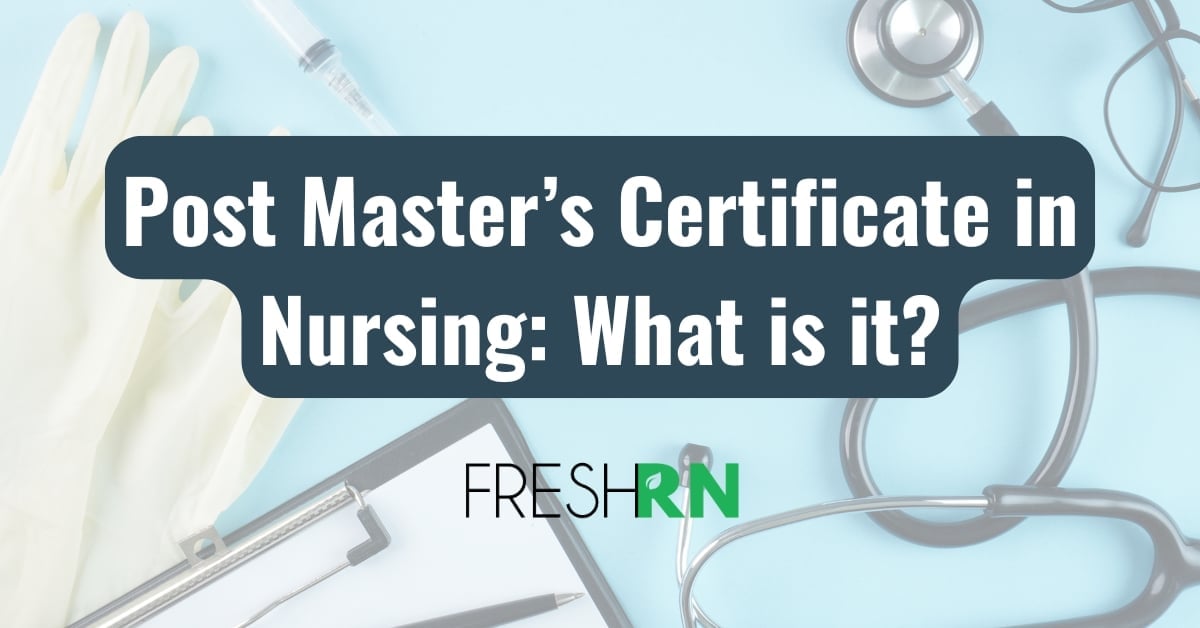In the U.S., stroke is the fifth leading cause of death and a major cause of long-term disability. Of all types of strokes, left MCA strokes are especially important to understand—not just for medical professionals, but for patients and families as well. These strokes impact areas of the brain responsible for language, movement, and sensation, making them particularly disruptive to daily life and recovery.
But what exactly happens when someone experiences a left MCA stroke? Whether you’re a newer neuro nurse, a healthcare student, or the loved one of someone who recently had a stroke, let’s walk through the key information in a way that’s both accurate and easy to understand.
Note: This post is for informational purposes only and not a substitute for medical advice or emergency care. Always consult a healthcare provider if you suspect a stroke.

Table of Contents
Quick Overview ➡️ What is the Left Middle Cerebral Artery?
When we talk about the middle cerebral artery (MCA), we’re talking about one of the major blood vessels inside the brain: a cerebral artery. These arteries are responsible for delivering oxygen-rich blood to different parts of the brain so everything runs smoothly. And the MCA? It’s kind of the VIP of the bunch.
The MCA is the largest of the cerebral arteries and branches off from the internal carotid artery. It travels along the Sylvian fissure and supplies blood to a huge portion of the brain, including parts of the frontal, parietal, and temporal lobes.
That’s a lot of lobes!
These areas are responsible for motor control, sensation, language, speech, and more. Basically, the MCA delivers the goods to a big chunk of what makes us… us.
🧠 Explain It Like I’m 5:
Think of the MCA like a giant garden hose that waters half your brain. The brain is like a really picky 🌵 plant—it needs the right amount of water (blood) all the time. If that hose gets a kink in it (a clot) or bursts (a bleed), the parts of the brain it was watering start to suffer. Some spots might wilt a little (mild symptoms), and others might completely dry up (serious damage), depending on how bad the blockage is and how long it lasts.
Left MCA Strokes vs. Right MCA Strokes: What’s the Difference?
Both sides of the brain have their own MCA, and each supplies blood to similar real estate—think motor, sensory, and visual functions. But there’s one big difference that often makes left-sided strokes more obvious, and sometimes more frequent: language lives on the left.
(Note ➡️ That’s a solid memory device for remembering which side controls language!)
In most people (especially right-handed folks), the left hemisphere is dominant for language, meaning it’s home to areas like Broca’s area and Wernicke’s area, which handle speech production and comprehension. So when someone has a left MCA stroke, it’s often very noticeable—slurred or absent speech, garbled words, or a total inability to talk or understand what’s being said.
The right MCA supplies blood to the same general lobes—frontal, parietal, temporal—but on the right side. While it’s equally important, the symptoms of a right MCA stroke can be a little sneakier. You might see:
- Left-sided weakness or numbness
- Left-sided visual field loss
- Left-sided neglect (the brain essentially “ignores” the left side of the body or space)
- Impaired judgment or spatial awareness
And because language is usually unaffected, these symptoms may not be recognized as quickly, especially if the patient is alert and speaking clearly.
As for why left-sided strokes appear more common, it’s likely due to a combination of:
- Symptom visibility (language deficits are hard to miss)
- Testing bias (we’re more likely to diagnose what we can easily observe)
- Anatomical variations in circulation and cardiac embolism patterns
- And for those of you who are neuro-nerdy like me and want to dig deeper into the left vs. right situation, let’s go!
Are left MCA strokes more common than right MCA strokes?
While left and right MCA strokes occur with similar frequency overall, there’s a fascinating reason why left-sided MCA strokes seem to stand out more—and why they might actually be slightly more common in certain types of strokes, like cardioembolic events.
Here’s what’s going on:
- The left common carotid artery branches directly off the aortic arch, creating a straighter, more direct path from the heart to the left MCA.
- The right common carotid, on the other hand, comes off the brachiocephalic trunk, which has a sharper angle.
- So when a clot forms in the heart (as in atrial fibrillation), it may be more likely to take that straighter shot to the left side.
Add to that the fact that left MCA strokes impact language, a glaringly obvious symptom, and we end up catching and diagnosing them more often and more quickly.
So while we don’t necessarily see more left MCA strokes across the board, they are:
- More likely to be recognized early
- More likely to produce dramatic symptoms
- Slightly more likely in embolism-driven strokes due to anatomy
🧠 Explain It Like I’m 5
Imagine the heart trying to send marbles (clots) down two twisty slides—one going to the left and one going to the right. The left slide is smoother and more direct, so more marbles tend to go that way. And if those marbles jam up the left slide? You’ll notice it quickly because it affects talking and moving the right side of the body.
The MCA Branches: M1, M2, M3, and M4
Now we’re diving into the deep end of the neuro pool 🏊 welcome to the branches of the middle cerebral artery. When we start naming things like M1, M2, and so on, we’re getting pretty specific about cerebral anatomy. But hang with me—there’s clinical relevance here, especially if you’re trying to connect symptoms to brain regions.
The MCA splits into four main segments as it travels through the brain, branching like a tree:
- M1 – Sphenoidal (Horizontal) Segment ➡️ This is the main stem that starts it all. It gives off lenticulostriate arteries, which supply deep brain structures like the internal capsule and basal ganglia. If a stroke hits here, you can see profound motor deficits—think dense hemiplegia.
- M2 – Insular Segment ➡️ This portion hugs the insula, a tucked-away part of the brain involved in sensory processing, emotion, and autonomic functions. Strokes here can affect pain perception, visceral awareness, and sometimes language, depending on how it branches.
- M3 – Opercular Segment ➡️ These branches wrap around the operculum—parts of the frontal, parietal, and temporal lobes. This is near Broca’s area on the dominant side, so damage here can cause expressive aphasia or motor planning issues.
- M4 – Cortical Segments ➡️ These are the outermost branches that fan across the lateral cortex—impacting specific regions related to motor and sensory function in the face, arm, and hand, as well as visual processing and higher-level thinking.
🧠 Explain It Like I’m 5:
Think of the MCA like a tree 🌳. M1 is the trunk. It’s thick and powerful and sends blood deep inside the tree. M2 and M3 are the big branches spreading out sideways, and M4 is all the little twigs reaching to the edges. If you snap a branch close to the trunk, more of the tree suffers. If it’s just a twig, the damage is more limited.
What Causes left MCA strokes?
A left MCA stroke can be caused by either a blockage (ischemic) or a rupture (hemorrhagic) in the artery.
Ischemic strokes are more common and include:
- Cardioembolic: A clot travels from the heart (often due to atrial fibrillation).
- Atherosclerotic: Cholesterol plaques build up and cause narrowing.
- Lacunar: Due to small vessel disease, often linked to hypertension or diabetes.
Hemorrhagic strokes typically result from uncontrolled high blood pressure, leading to a burst vessel and bleeding in the brain.
Risk Factors for MCA Stroke
So, why do some people have strokes and others don’t? It often comes down to risk factors—some you can control, and others you simply can’t. Understanding both can help you know what to look out for, whether you’re a healthcare provider or simply someone who wants to stay informed.
Let’s break them down.
Non-Modifiable Risk Factors
These are the things you can’t change, no matter how healthy your lifestyle is.
- Age: The risk of stroke increases with age.
- Family history/genetics: If strokes run in your family, your risk goes up, too.
- Race: African Americans are at significantly higher risk, with slightly elevated risk in Hispanic and Native American populations compared to White Americans.
Modifiable Risk Factors
These are the things that we can change—and they’re really important, especially for stroke prevention.
- High blood pressure (hypertension): This is the #1 most important risk factor. It damages blood vessels over time.
- Smoking: Nicotine and other chemicals increase clot risk and damage arteries.
- Diabetes: High blood sugar can damage blood vessels and increase the risk of blood clots.
- Obesity: Increases strain on the cardiovascular system.
- Poor diet and lack of physical activity: Affect blood pressure, cholesterol, and weight.
- Atrial fibrillation and other heart conditions: These can cause clots to form in the heart and travel to the brain.
So while we can’t stop time or rewrite our DNA, we can make choices every day that lower our chances of having a stroke, especially when it comes to blood pressure, heart health, and lifestyle.
Symptoms of a Left MCA Stroke
Symptoms vary based on which branch is affected and how large the stroke is. Common symptoms include:
- Right-sided weakness or paralysis (hemiplegia)
- Right-sided sensory loss
- Aphasia (difficulty speaking or understanding language)
- Facial droop on the right
- Difficulty swallowing (dysphagia)
- Visual field loss (right-sided hemianopia)
If the stroke is massive, it may cause brain swelling and shifts in brain tissue, which is a medical emergency.
Diagnosing a Left MCA Stroke
When someone shows up with stroke symptoms, time is absolutely critical—and not just for treatment speed, but to figure out what type of stroke they’re actually having. That’s where imaging comes in.
Let’s break down the most common imaging tools:
- CT scan (non-contrast): This is almost always the first scan ordered because it’s fast, widely available, and gives a quick look at whether the stroke is hemorrhagic (bleeding) or not. Here’s the tricky part: ischemic strokes can take hours to show up clearly on a CT, especially early on. But CT is excellent at detecting bleeding, which is crucial, because if the stroke is hemorrhagic, giving ischemic stroke treatments (like tPA) could make things dramatically worse.
- MRI with DWI (diffusion-weighted imaging): This scan is more sensitive for ischemic strokes and can detect changes within minutes to hours of stroke onset. It gives a much more detailed picture but takes longer and isn’t always done right away, depending on the hospital’s resources and urgency.
- CT or MR Angiogram with Perfusion Imaging: These look at blood flow and help determine what’s already damaged (the core) versus what’s still salvageable (the penumbra). This can help providers decide if a patient might benefit from a mechanical thrombectomy—a clot-removal procedure.
So, the first and most important goal is to rule out bleeding quickly. If there’s no bleeding, providers can move toward treatment for an ischemic stroke. But if there is bleeding, the entire treatment plan changes, making those first few minutes in the scanner incredibly important.
Read more about stroke imaging from the Radiological Society of North America (RSNA)
Treatment for Left MCA Stroke
Treatment for a left MCA stroke isn’t one-size-fits-all. It depends heavily on the type of stroke (ischemic vs. hemorrhagic), how large the stroke is, and—most importantly—how quickly the patient arrives after symptoms begin. That’s why you’ll hear the phrase “time is brain” over and over in stroke care.
Here are the major treatment options:
- tPA (tissue plasminogen activator): This is a clot-busting drug that can be administered for ischemic strokes, but only within a narrow time window (usually within 4.5 hours of symptom onset). It helps dissolve the clot and restore blood flow. But it can’t be used if the stroke is hemorrhagic, which is why that initial CT scan is so crucial.
- Mechanical Thrombectomy: For patients with large vessel occlusions (often involving the M1 or proximal M2 segments), this minimally invasive procedure can be used to physically remove the clot. A catheter is threaded up from the groin to the brain, and special tools are used to retrieve the clot. This is typically done within 6–24 hours of symptom onset, depending on imaging results.
- Antiplatelets or Anticoagulants: Once bleeding has been ruled out, medications like aspirin or heparin may be started, depending on the patient’s stroke type and cause (e.g., cardioembolic stroke from atrial fibrillation).
- Blood Pressure Management: Blood pressure may be allowed to run slightly higher in some ischemic stroke patients to help improve brain perfusion. But in hemorrhagic stroke, it’s usually brought down carefully to reduce further bleeding risk.
- Supportive Care: Stroke patients often require close monitoring in an ICU or step-down unit, where we watch for complications like swelling, worsening neuro exams, aspiration, or seizures. Fluid management, oxygenation, and blood sugar control are all part of this.
- Rehabilitation: Once the patient is stable, rehab is key. Speech therapy, occupational therapy, and physical therapy help improve deficits from the stroke. The earlier rehab begins, the better the outcomes tend to be.
Every minute counts in stroke treatment, especially for left MCA strokes that can affect speech, motor function, and cognition. The goal is to act fast enough to minimize brain damage and maximize recovery potential.
(And if you’re a neuro nurse and want a deep dive into neuro patient care, check out my comprehensive course called Neuro Wise!)
What Happens After? Common Left MCA Stroke Deficits
After the acute treatment phase, the real journey begins—recovery. What happens after a left MCA stroke can vary wildly depending on the size of the stroke, which branches were involved, how quickly treatment was received, and the patient’s overall health.
Here are some common effects seen after a left MCA stroke:
- Aphasia: Because the left hemisphere typically houses our language centers, many patients experience difficulties with speaking (expressive aphasia), understanding (receptive aphasia), or both (global aphasia).
- Right-sided hemiparesis or hemiplegia: Weakness or paralysis on the right side of the body is common, especially in the face and arm more than the leg.
- Sensory deficits: Patients might feel numbness, tingling, or decreased sensation on the right side.
- Visual field cuts: This includes loss of vision in the right half of the visual field (right homonymous hemianopia).
- Cognitive changes: These can include issues with memory, problem-solving, and attention—especially when the frontal lobe is affected.
Some people bounce back with minimal lingering deficits. Others may have more profound long-term challenges that require ongoing therapy and support.
What recovery looks like after left MCA strokes:
Recovery typically involves a multidisciplinary rehab team: physical therapy for mobility, occupational therapy for daily tasks, and speech therapy for communication and swallowing. Depending on the severity, patients may start in an inpatient rehab facility before transitioning to outpatient care or home health.
It’s also an emotional and psychological journey. Stroke survivors often experience anxiety, depression, or frustration as they adjust to life post-stroke. Caregivers need support too—this is a team effort.
And while recovery can be unpredictable, one thing is certain: early intervention, consistent rehab, and support make a massive difference.
💡 Want to Get Better at Neuro Checks?
If you’re a nurse and want to actually feel confident during neuro assessments, check out my free 4-part email series: Conscious Neuro Checks: Tips for Nurses. It’s practical, short, and based on years of experience in the neuro ICU. You can sign up for free below 👇
Final Thoughts
Left MCA strokes are serious, complex, and often life-altering. Whether you’re a nurse at the bedside, a student trying to understand neuro anatomy, or someone personally impacted by stroke—understanding what’s happening in the brain is a powerful step toward confidence and clarity.
More Resources for Left MCA Stroke
- The Middle Cerebral Artery – Areas of the brain that supply the MCA
- MCA Stroke – What Can Go Wrong with the Middle Cerebral Artery
- Neuro Nurse Assessment – Conscious Head to Toe
- Neuro Assessment: How to Assess An Unconscious Neuro Patient Like a Neuro ICU Nurse
- American Stroke Association – About Strokes
Streamline your nursing assessments with real-life tips to help you stay efficient and confident (even when your shift is chaos). Perfect for new grads finding their flow!
Continue Reading 4 Quick Nursing Assessment Tips for Your Next Shift
What does a “medical surgery nurse” do? Learn the correct spelling of “med-surg,” what it’s like to work on a medical-surgical unit, and why it’s one of the most important specialties in nursing.
Continue Reading Curious About a “Medical Surgery Nurse”? Let’s Talk Med-Surg
How long does it take to go from BSN to DNP? Let’s talk what affects the timeline, and how BSN to DNP programs compare to other nurse practitioner paths. Plus tips for choosing the right program.
Continue Reading How Long Does it Take to Go From BSN to DNP? Let’s Discuss.
The Adult Gero NP role focuses on caring for adults across the lifespan, including older adults. This guide breaks down what AGNPs do, how they compare to other NP specialties, and what it takes to earn your AGNP degree and certification.
Continue Reading So You Wanna Be an Adult Gero NP? Here’s What to Know First
Want to get a nursing informatics degree online? Let’s break down what your options are, and how to choose a path that aligns with your personality and career goals.
Continue Reading Nursing Informatics Degree Online: Everything to Know Before You Enroll
Learn how the post master’s certificate in nursing works, who they’re for, and how to expand your practice with flexible post-grad nursing options.
Continue Reading Post Master’s Certificate in Nursing: What Is It?
New to neuro? Let's get you a head start.

Neuro is a specialty that can feel intimidating at first. There’s a ton of new terminology, patient conditions can change fast, and neuro assessments are way more nuanced than they seem. It’s a lot to take in—but you don’t have to figure it out alone. Neuro Wise is the course we wish we had as new neuro nurses. It breaks down complex neuro concepts into easy-to-understand lessons, so you can confidently assess your patients, give a solid neuro report, and actually understand what’s going on—not just go through the motions. We cover everything you need to know—so you can step onto the unit feeling prepared, not panicked.
Start Now









Thank you for creating an easy-to-understand article on this particular type of stroke. I was able to use it to send to a patient who had a LMCA 1 stroke and was worried about further stroke symptoms he should be aware of.
This formula supported that process, and today, I feel like myself again. Don’t give up. Recovery is possible. There are real, natural options out there. It’s also crucial to learn as much as you can about your diagnosis. ( worldrehabilitateclinic. com ).